Background
The failure of the Afghan Peace process and subsequent 'US-allied forces’ withdrawal from Afghanistan has paved the way for an accelerated Taliban offensive in the country. This has become a serious concern for regional security and stability. Moreover, in the worst-case scenario, if the Taliban seize control of Afghanistan, there are worries that fundamentalist ideology would be exported to Central Asia, which is considered Russia’s sphere of influence. As a result, Moscow has mobilized its military forces in Tajikistan and activated its links with Uzbekistan and Turkmenistan in preparation for any threat posed by the Taliban in its backyard.
Russia’s geopolitical interests in Central Asia and further South remained primarily focussed on securing its territory from external threats. A volatile regional environment in Afghanistan has been the primary concern to both Russia and Central Asia. Tajikistan, Turkmenistan, and Uzbekistan share a border with Afghanistan. Consequently, they have been vulnerable to cross-border terrorism, extremism, and drug trafficking originating from Af-Pak region. While Russia and Europe were the final destinations for these unlawful activities, Central Asia acted as a transit point. Nonetheless, these activities have had a significant impact on Central Asia’s internal security. Thus, in the post-Soviet period, Russia’s role in Central Asia revolved around ensuring Central Asia’s security.
Following 9/11, the United States launched a war on terror to eliminate Al Qaeda and other terror groups that had taken sanctuary in Afghanistan under Taliban control. It had momentarily reduced the security risks to Moscow and its Central Asian partners. But, at the same time, the U.S. presence in Afghanistan presented Russia with a geostrategic challenge. As the U.S. troops will withdraw by August 31, the Taliban’s rapid territorial gains have security ramifications for Central Asia and Russia. And, being the security manager of Central Asia, it requires Moscow’s full attention to deal with the potential threats arising from neighbouring Afghanistan.
How will insurgency in Afghanistan impact Central Asia?
Taliban’s links with militant groups across South and Central Asia are pretty evident. Al-Qaeda has been sheltering under the Taliban’s umbrella for a long time. Al-Qaida is present in at least 15 Afghan provinces, primarily in the eastern, southern, and south-eastern regions.1 Similarly, some Central Asian terrorist organizations like the Islamic Movement of Uzbekistan (IMU), Jamaat Ansarullah (an ethnic Tajik terror group), and Khatiba Imam al-Bukhari (KIB) have also flourished under the aegis of the Taliban.2
Afghanistan’s neighbours are well aware that the Taliban will not refuse foreign terrorist organizations access to Afghan territory. There are reports about these militant groups (Jamaat Ansarullah) now fighting along with the Taliban in northern parts of Afghanistan.3 In its 28th report submitted to United Nations Security Council (UNSC), the U.N. Analytical Support and Sanctions Monitoring Team highlighted that the number of foreign terrorist fighters is approximately 8,000 to 10,000. They mainly comprise of individuals from Pakistan, Central Asia, the North Caucasus region of the Russian Federation, and the Xinjiang Uyghur Autonomous Region.4
The Taliban and other terrorist organizations consider the U.S. withdrawal from Afghanistan as a victory. Al Qaeda, IMU, and other terrorist groups will also gain from the power vacuum left behind. These terrorist groups with a high level of motivation will not be satisfied with the takeover of Afghanistan and will most likely seek to expand beyond the country. Jamaat Ansarullah (J.A.), Khatiba Imam al-Bukhari (KIB), the Islamic Jihad Union (IJU), Katibat Tawhidwal Jihad (KTJ), and Uyghur fighters of Turkestan Islamic Party (TIP) from China’s Xinjiang region have been expressing their views through their Telegram accounts. The KIB congratulated the Taliban, calling it the victory of the “Islamic Ummah.” A KTJ Telegram post read, “today is a great day for entire Ummah because, after the 18-year war in Afghanistan, America humiliatingly acknowledged its defeat from the Lions of Islam”.5
The secular regimes of Central Asia have been facing the threat of Islamic fundamentalism since the collapse of the Soviet Union in 1991. Support to Islamic opposition in Tajik civil war (1992-97), suicide bombings in Uzbekistan and Tajikistan, and other incidents were piloted by Central Asian terrorist organizations. Taliban also played an essential role in the Tajik civil war by supporting the anti-Government Islamic opposition. With the rising instability in Afghanistan, Central Asian countries are concerned that the Taliban may seize control of Afghanistan. And the Taliban factor may also offer inspiration and a morale booster to the radical Islamists within Central Asia, pushing them to fight against these secular countries. If the Taliban gain control and install Sharia law in Afghanistan, the Islamic resistance in the Muslim majority Central Asian countries will become more active.6
Dynamics of Russia-Taliban Relations
Moscow hosted several Taliban delegations in recent years, irrespective of the fact that the Taliban and Al Qaeda are designated as terrorist groups by Russia.7 Taliban supported Russia’s Chechen rebels during the second Chechen war, in 1999–2000. Furthermore, in 2000, the Taliban regime officially recognized Chechnya’s independence from Russia.8 Against this disorderly background, the current Russia-Taliban relations have witnessed a complete transformation based on geopolitical peculiarities. The Central Asian countries have also hosted Taliban delegations; however, the agenda around these meetings has been mainly centered on securing the economic and security interests of the Central Asian countries.
Although the Taliban has pledged that its ambitions do not extend beyond Afghanistan’s borders, the desperate desire to dominate the country by bloodshed contradicts the Taliban’s assertions.9 Taliban has taken control of the land stretching from Herat province in western Afghanistan to Badakhshan province in the northeast, capturing key districts and border crossings.10 Moreover, with the heightened Taliban offensive in north Afghanistan, some of the Afghan National Defence and Security Forces (ANDSF) troops have crossed the border to take shelter in Uzbekistan and Tajikistan.
The reaction of the frontline Central Asian states- Tajikistan, Turkmenistan, and Uzbekistan against the Taliban advances in northern Afghanistan has been diverse. Tajikistan has opened its border for Afghan forces and refugees, while Uzbekistan and Turkmenistan have been hesitant to allow refugees. Uzbek authorities even sent back Afghan military troops who fled to Uzbekistan after Taliban militia seized their outposts.11 The likely influx of refugees is critical as it will become a burden for developing economies of Central Asia along with the multiple security implications.
Moscow is involved diplomatically with the Taliban. Simultaneously, the Russian military believes it is sensible to prepare for the worst-case scenario. Russia has an armoured motorized-rifle division in Tajikistan, known as the 201st military base. It is now being mobilized together with Tajikistani forces. Also, to showcase its military might, recently, Russia and Uzbekistan held a joint military drill near the Uzbek-Afghan border with around 1500 troops.12 A trilateral military exercise (Russia, Uzbekistan, and Tajikistan) is also expected to occur soon in Tajikistan near the Afghanistan border.13
Despite these collective efforts and the Taliban’s repeated assurance of not letting the insurgency go beyond Afghanistan’s border, the situation may turn challenging for both Russia and Central Asia at any point in time. The militant groups like Ansarullah and IMU may infiltrate Central Asian territory and do some severe damage. Also, it will be interesting to see if the Taliban fails to maintain border security, would Moscow be able to prevent a possible entrance of militant fighters?
Role of CSTO and SCO
Collective Security Treaty Organization (CSTO) is a Russia-led military alliance with Kazakhstan, Kyrgyzstan, Tajikistan, Armenia, and Belarus. Afghanistan and Serbia hold observer status in this regional grouping. Turkmenistan followed a policy of neutrality, so it never became a part of any regional alliance, while Uzbekistan’s relations with CSTO have been complicated. Initially, when Collective Security Treaty was signed in 1992, Uzbekistan was a part of it, but it renounced its membership in 1999 along with Azerbaijan and Georgia.14 Tashkent, which maintains Central Asia’s largest standing army, rejoined CSTO in 2006 and suspended -its membership for the second time in 2012.15 Although Tashkent has not rejoined the military bloc, it has increased its bilateral military cooperation with Moscow under President Shavkat Mirziyoyev.
Russia maintains major military bases in Tajikistan and Kyrgyzstan.16 And these are the two countries in Central Asia that cannot maintain their security and are highly dependent on Russia. The security cooperation with Russia is carried out through CSTO. The worsening security situation in Afghanistan, and its potential repercussions on the region, will be a crucial test for the CSTO, as it has yet to earn its marks as a regional security provider. Russia has mobilized its military capabilities in Central Asia in both individual capacities and through CSTO. But, there is still an immense need for more joint military exercises and training, security coordination, and intelligence sharing to make better use of this military alliance. Securing Tajikistan and Uzbekistan’s borders with Afghanistan, which serve as the first line of defence for both Central Asia and Russia, is essential to uphold the credibility of CSTO.17
The Shanghai Cooperation Organization (SCO) is a China-dominated organization created in 2001 to mitigate the threats to Central Asia. China also wanted the support of Central Asian countries to curb the menace of Uyghur dissent. For this purpose, a Regional Anti-Terrorist Structure (RATS) was established in 2002 in Tashkent. The SCO’s entire focus is to maintain regional stability, and Afghanistan remains a significant challenge in this regard. To give more attention to the Afghanistan issue, the SCO-Afghanistan Contact Group was created in 2005.
SCO is significant as it has all the regional stakeholders as its members. The security challenges arising from Taliban advances in Afghanistan, especially after the U.S. withdrawal, require a proactive approach from SCO. Russia and China have their credibility at stake. They need a more suitable and robust strategy to deal with the Afghan spill over into Central Asia.18 India’s role in Afghanistan’s development and reconstruction cannot be disregarded. New Delhi may use SCO to append its Afghan Strategy. However, China’s self-interests to gain strategic influence within the Taliban and its nexus with Pakistan may weaken the chances of SCO playing a crucial role in the Afghanistan issue.
Challenges Ahead
Post-Soviet space has become challenging for Russia to retain its influence. Armenia-Azerbaijan war, political upheaval in Kyrgyzstan, border clashes between Kyrgyzstan and Tajikistan are pressing issues Russia has been dealing with in the recent past. In addition, western economic sanctions and the COVID-19 pandemic have distressed the Russian economy. Furthermore, Moscow’s role as a regional security provider is being challenged by increasing Chinese penetration. Russia-Central Asia relationship has also undergone a drastic change. The dependency that they had over Russia is shifted towards China. Therefore, it has become imperative that Russia proves true to the role of security provider in Central Asia against the rising instability in Afghanistan.
References
- United Nations Security Council Report no. S/2021/655, Letter dated 15 July 2021 from the Chair of the Security Council Committee pursuant to resolutions 1267 (1999), 1989 (2011) and 2253 (2015) concerning Islamic State in Iraq and the Levant (Da’esh), Al-Qaida and associated individuals, groups, undertakings and entities addressed to the President of the Security Council, 21 July 2021. https://www.securitycouncilreport.org/atf/cf/%7B65BFCF9B-6D27-4E9C-8CD3-CF6E4FF96FF9%7D/S_2021_655_E.pdf
- Ibid.
- Mumin Ahmadi, Mullorajab Yusufi and Nigorai Fazliddin, “Exclusive: Taliban Puts Tajik Militants Partially In Charge Of Afghanistan's Northern Border”, RFE/RL, July 27, 2021. https://www.rferl.org/a/taliban-tajik-militants-border/31380071.html
- United Nations Security Council, Report No. S/2021/486. Letter dated 20 May 2021 from the Chair of the Security Council Committee established pursuant to resolution 1988 (2011) addressed to the President of the Security Council, June 1 2021.
https://www.undocs.org/S/2021/486 - Pravesh Kumar Gupta and Mahima Chhapariya, “US-Taliban Peace Deal and its Implications for Central Asia”, The Diplomatist, 16 May, 2020. https://diplomatist.com/2020/05/16/us-taliban-peace-deal-and-its-implications-for-central-asia/
- “Tajik’ Taliban creating havoc in Northern Afghanistan”, Sarkaritel, July 30, 2021, https://www.sarkaritel.com/tajik-taliban-creating-havoc-in-northern-afghanistan/
- Pavel Felgenhauer, “Amidst Taliban Gains, Russian Strategic Assets Threatened in Central Asia”, Eurasia Daily Monitor Volume: 18 Issue: 113, July 15, 2021. https://jamestown.org/program/amidst-taliban-gains-russian-strategic-assets-threatened-in-central-asia/
- Ibid.
- Catherine Putz, “With Eyes on Afghanistan, Russian Military Exercises in Central Asia” The Diplomat, August 04, 2021. https://thediplomat.com/2021/08/with-eyes-on-afghanistan-russian-military-exercises-in-central-asia/
- Nishank Motwani, “No good options for Central Asia after US withdrawal from Afghanistan” The East Asia Forum, 11 August 2021. https://www.eastasiaforum.org/2021/08/11/no-good-options-for-central-asia-after-us-withdrawal-from-afghanistan/
- Gavin Helf, and Barmak Pazhwak, “Central Asia Prepares for Taliban Takeover”, United States Institute of Peace, July 20, 2021, https://www.usip.org/publications/2021/07/central-asia-prepares-taliban-takeover
- “Russia-Led Drills Begin on Afghanistan Border”, The Moscow Times, August 5, 2021 https://www.themoscowtimes.com/2021/08/05/russia-led-drills-begin-on-afghanistan-borderafp-a74707
- “Russia to hold Central Asia army drills near Afghan border”, The Economic Times, July 19, 2021. https://economictimes.indiatimes.com/news/defence/russia-to-hold-central-asia-army-drills-near-afghan-border/articleshow/84550086.cms?utm_source=contentofinterest&utm_medium=text&utm_campaign=cppst
- “From the Treaty to the Organization” CSTO Secretariat, https://en.odkb-csto.org/25years/
- Zabikhulla S. Saipov, “Factors that Influenced Uzbekistan’s Decision to Pull out of the CSTO: The View from Tashkent”, Eursai Daily Monitor, Vol 9 Issue 136. July 18, 2012. https://jamestown.org/program/factors-that-influenced-uzbekistans-decision-to-pull-out-of-the-csto-the-view-from-tashkent/
- “Russia-Led Drills Begin on Afghanistan Border”, The Moscow Times, August 5, 2021 https://www.themoscowtimes.com/2021/08/05/russia-led-drills-begin-on-afghanistan-borderafp-a74707
- Dmitri Trenin, “Afghanistan After the U.S. Pullout: Challenges to Russia and Central Asia”, Carnegie Moscow Centre, July 13, 2021. https://carnegie.ru/commentary/84951
- Balwan singh Nagial, “Terrorism in Afghanistan and spillover effect in Central Asia”, the Times of India, July 31, 2021. https://timesofindia.indiatimes.com/blogs/col-nagial/terrorism-in-afghanistan-and-spillover-effect-in-central-asia/
(The paper is the author’s individual scholastic articulation. The author certifies that the article/paper is original in content, unpublished and it has not been submitted for publication/web upload elsewhere, and that the facts and figures quoted are duly referenced, as needed, and are believed to be correct). (The paper does not necessarily represent the organisational stance... More >>
Image Source: https://static.dw.com/image/46235945_303.jpg

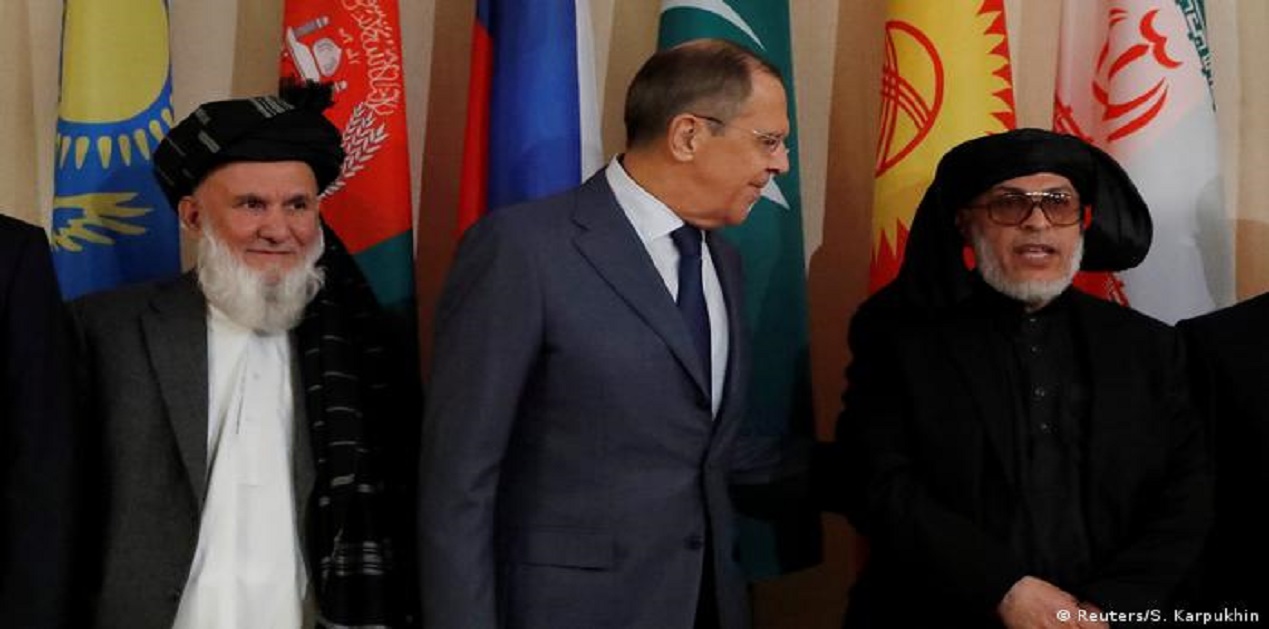


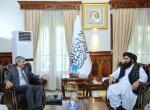
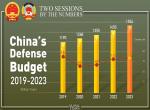
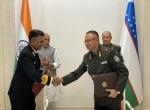
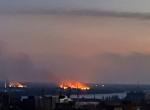
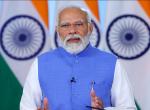
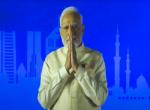
Post new comment